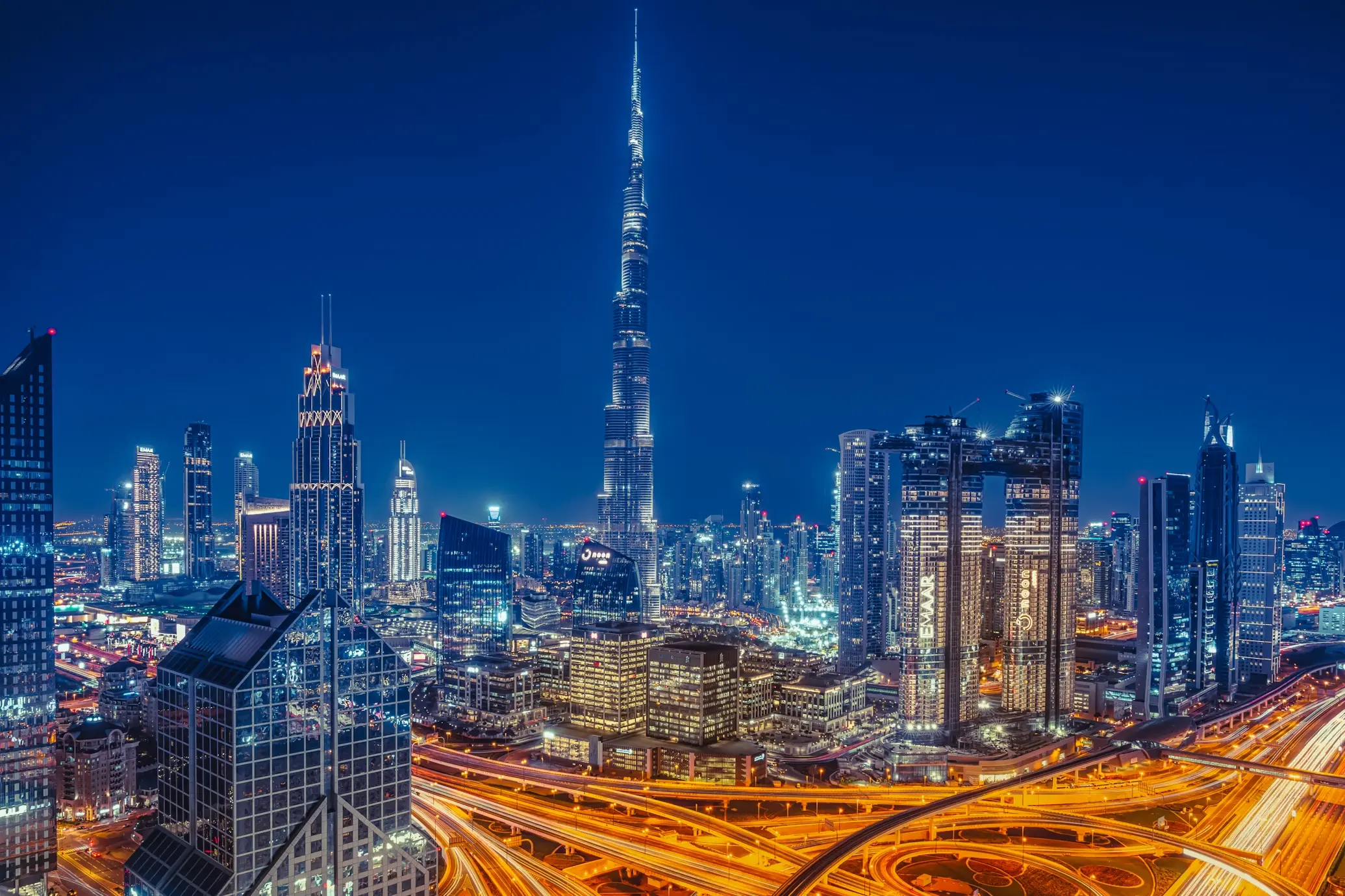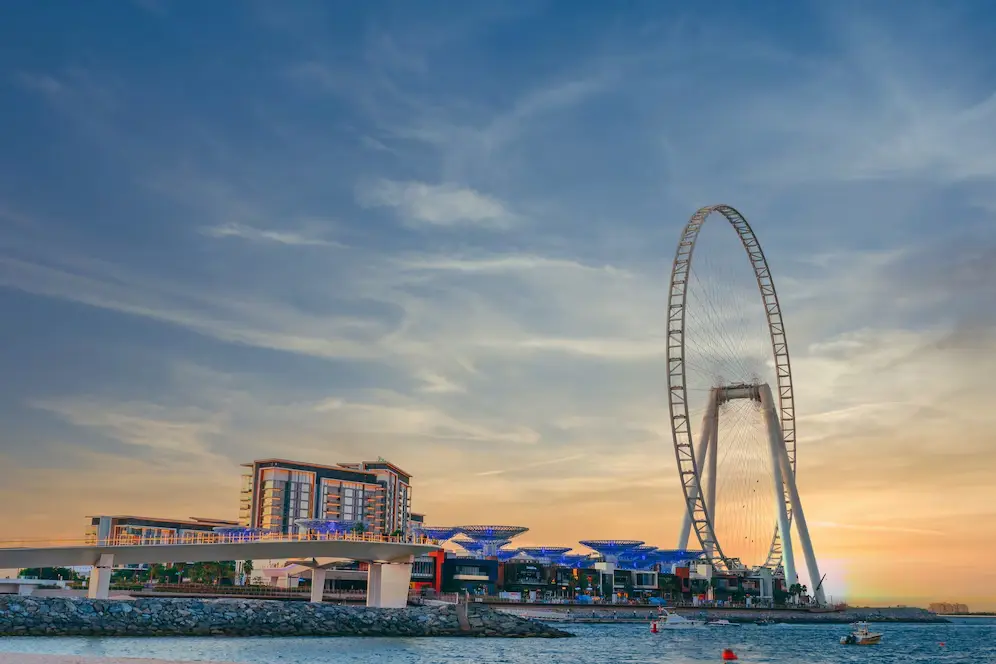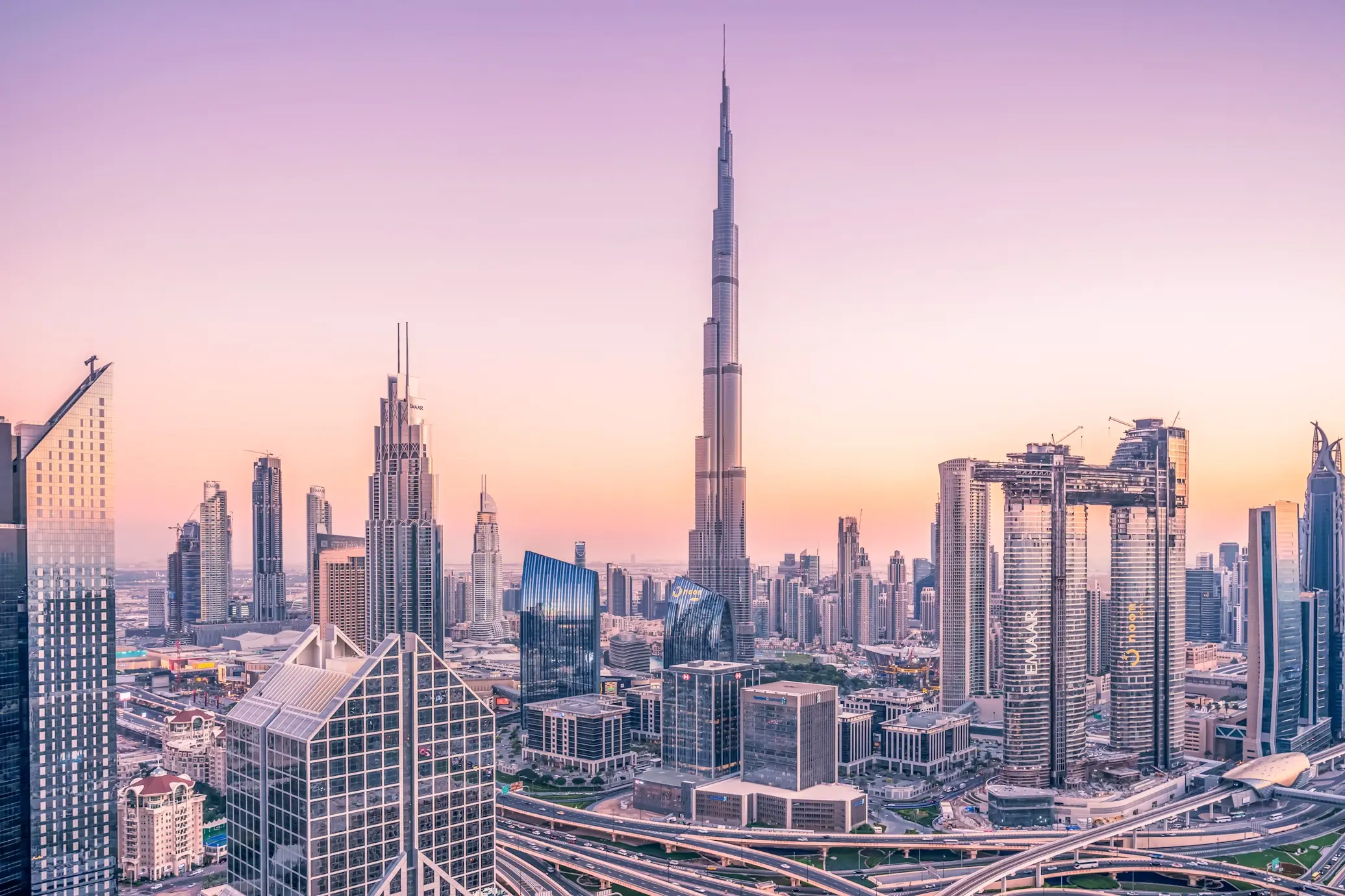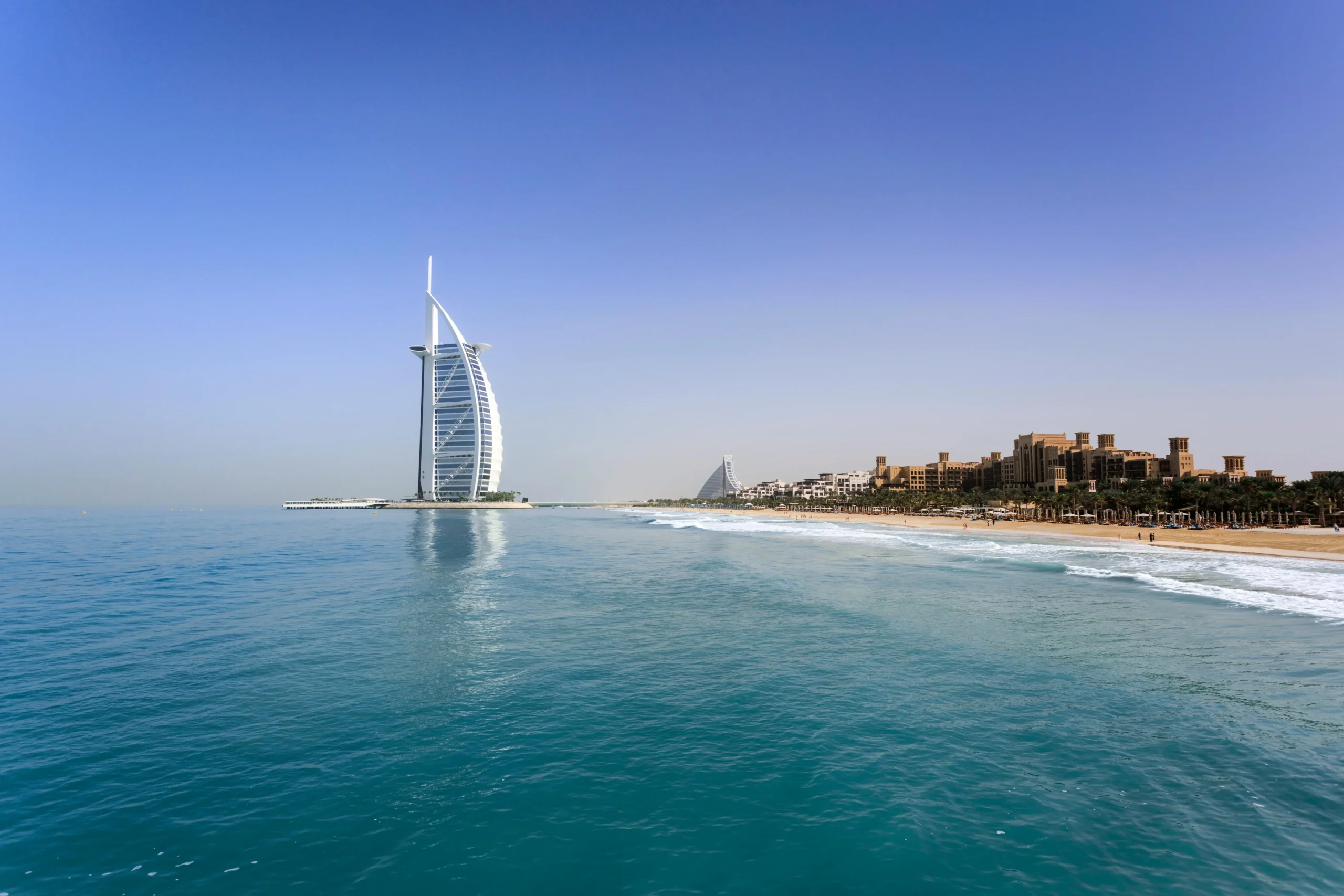The worst time to visit Dubai is during the summer months, particularly from May to August. During these months temperature rises to 40°c. The intense heat can limit your ability to explore the city, do outdoor activities, or even walk around comfortably.
Worst Time To Visit Dubai
When planning a trip to Dubai, timing is of the utmost importance. Dubai is known for its scorching heat and desert climate, making certain parts of the year less favorable for travel. Understanding the general conditions and how different seasons affect your travel experience is important to avoid discomfort.
Here is a detailed look at why summer may be the worst season to visit Dubai.
Extreme heat
The summer months, especially from June to August, are considered the worst time to visit Dubai. During this period, temperatures can soar to 40-45 degrees Celsius (104-113 degrees Fahrenheit) or even higher.
The intense heat can make outdoor activities unbearable, significantly limiting your ability to explore the city’s attractions. Even with Dubai’s well-developed indoor facilities, the constant sunshine and high humidity levels can be overwhelming.
Impact on travel experiences
- Limited outdoor activities: Extreme heat restricts outdoor activities such as desert safaris, beach walks and even simple city exploration. Many tourists find themselves confined to air-conditioned spaces, unable to enjoy Dubai’s vibrant outdoor experiences.
- Health concerns: Prolonged exposure to such high temperatures can lead to heatstroke, dehydration and other heat-related illnesses. Travelers must take extra precautions, such as staying hydrated, applying sunscreen and avoiding the sun during peak hours.
- Reduced tourist numbers: Due to unfavourable weather, tourist numbers tend to drop significantly during the summer. While this may mean fewer crowds, it also results in some attractions reducing their operating hours or undergoing maintenance, affecting your overall experience.
- High humidity levels: Besides the scorching heat, humidity levels can also rise sharply, especially in coastal areas. The sticky, oppressive atmosphere can make it feel even hotter, causing discomfort even during short walks.
Considerations for Travelers
Although summer may be the worst time to visit Dubai, it is also when you can find the best deals on hotels and flights. However, unless you are specifically going for indoor shopping or events, it is wise to plan your trip during the cooler months from November to March. During this time, the weather is much more pleasant, allowing you to fully enjoy everything Dubai has to offer without the extreme discomfort of summer.
Which Months Should You Avoid Visiting Dubai Due To Extreme Heat
When planning a trip to Dubai, it is essential to consider the weather conditions, especially the extreme heat that the city experiences during certain months. The worst time to visit Dubai is usually during the peak summer months, particularly June, July, August, and early September.
Why these months are particularly unfavorable
- Extreme Temperatures:
- During these months, Dubai experiences some of the hottest temperatures in the world, with daily maximum temperatures often exceeding 40°C (104°F) and sometimes reaching 50°C (122°F). The intense heat can make outdoor activities almost unbearable, even in the shade.
- High Humidity:
- Along with the scorching heat, humidity levels also increase, especially in July and August. This combination of heat and humidity makes the air feel even hotter, creating a stifling and uncomfortable environment.
- Limited outdoor activities:
- Many outdoor activities and pursuits become less enjoyable or inaccessible due to the extreme heat. For example, exploring the city’s vibrant markets, taking walking tours, or dining out can be challenging and tiring.
Potential health issues
Travelers visiting Dubai during these months should be aware of the potential health risks posed by extreme heat:
- Heat exhaustion:
- Prolonged exposure to high temperatures can lead to heat exhaustion, with symptoms such as heavy sweating, weakness, dizziness, nausea, and headaches. Without prompt treatment, heat exhaustion can become even more severe.
- Heatstroke:
- Heatstroke is a serious and life-threatening condition that occurs when the body overheats and can no longer regulate its temperature. Symptoms include confusion, rapid heartbeat, dry skin, and loss of consciousness. Immediate medical attention is important, as untreated heatstroke can lead to organ failure and even death.

What Are The Most Crowded Months To Visit Dubai?
Dubai is a top global destination,the most crowded months to visit Dubai are from November to March.
- November:
- Reason: As the summer heat subsides, tourists start coming back to Dubai. With the start of the high season, November sees a significant increase in the number of visitors, especially those who want to escape the cold weather.
- December and January:
- Reason: These months feature major holidays such as Christmas and New Year, as well as the Dubai Shopping Festival, which attracts tourists from around the world. The city is abuzz with festivities, leading to crowds and long wait times at attractions.
- February and March:
- Reason: The weather is pleasant and events such as the Dubai Food Festival and the Dubai World Cup draw huge crowds. This period is still within the peak tourist season, so crowds are rare. During these months, Dubai experiences a high influx of tourists due to several factors:
- Pleasant weather: These months have the most comfortable temperatures, making outdoor activities, sightseeing and beach-going more enjoyable.
- Holiday season: December and early January see a surge in visitor numbers due to the festive season, with many tourists visiting Dubai to celebrate Christmas and New Year.
- Dubai Shopping Festival (DSF): Held every year from late December to early February, DSF attracts millions of visitors with its massive sales, entertainment events and activities.
- Events and festivals: Dubai hosts a number of events and festivals during this period, including the Dubai International Film Festival, the Dubai Marathon and the Omega Dubai Desert Classic, which attract large crowds.
The impact of congestion on travel quality
- Long wait times: During busy months, popular attractions such as Burj Khalifa, Dubai Mall and Palm Jumeirah can get incredibly busy. This can lead to long wait times for entry, making it challenging to fully enjoy these places. Restaurants, especially those that offer spectacular views or unique dining experiences, may also have long wait lists or require advance booking.
- Higher prices: As demand increases during these busy months, prices tend to rise as well. Hotels, flights, and even some attractions may charge a premium, making travel more expensive. This can be challenging for find budget friendly accommodations or enjoy a premium experience without overspending.
- Crowded beaches and public spaces: Beaches and public spaces in Dubai can be crowded during high season, which can diminish the relaxing atmosphere many visitors are looking for. It may be difficult to find a quiet spot to relax, and the overall experience may feel less exclusive.
Best Months To Visit Dubai
Best Months to Visit Dubai
- November
- Weather: Pleasant temperatures ranging from 24°C to 30°C.
- Activities: Ideal for outdoor activities and beach hopping.
- Events: Dubai Shopping Festival and various cultural events.
- December
- Weather: Comfortable with temperatures ranging between 19°C to 26°C.
- Activities: Great for sightseeing and outdoor adventures.
- Events: Festive celebrations and New Year’s Eve events.
- January
- Weather: Cool and pleasant, with temperatures ranging from 17°C to 25°C.
- Activities: Perfect for city exploration and outdoor excursions.
- Events: Dubai International Film Festival and shopping events.
- February
- Weather: Mild with temperatures ranging from 18°C to 26°C.
- Activities: Great for outdoor activities and sightseeing.
- Events: Various cultural festivals and outdoor events.
- March
- Weather: Warm with temperatures between 20°C to 29°C.
- Activities: Great for beach activities and exploring.
- Events: Dubai Food Festival and other local events.
- April
- Weather: Warm with temperatures between 24°C to 33°C.
- Activities: Ideal before the extreme heat sets in.
- Events: Various local events and festivals.
How Can You Survive Dubai’s Summer Heat?
Dubai is a wonderful place, but it can get very hot. If you’re visiting during the summer months, you’ll need to be well prepared.
Here’s how you can stay cool, hydrated, and safe while exploring this vibrant city.
- Stay hydrated
- Drink water regularly: Carry a reusable water bottle and sip frequently, even if you don’t feel thirsty.
- Electrolyte solution: Consider carrying electrolyte tablets or beverages to replace essential salts lost through sweat.
- Avoid caffeine and alcohol: These can dehydrate you further, so limit your intake during the day.
- Wear the right clothes
- Lightweight clothing: Choose loose-fitting clothes made from breathable materials like cotton or linen.
- Light colors: Choose light-colored clothing to reflect the sun’s rays rather than absorb them.
- UV-protective clothing: Consider buying clothing with built-in UV protection to protect your skin from harmful rays.
- Take sun protection
- Sunscreen: Apply a broad-spectrum sunscreen with at least SPF 30 and reapply every two hours or after swimming.
- Hat and sunglasses: Wear a wide-brimmed hat and UV-protective sunglasses to protect your face and eyes from direct sunlight.
- Umbrella: Carry a compact, UV-blocking umbrella for extra shade when outdoors.
- Plan your day wisely
- Indoor activities: Focus on indoor attractions like malls, museums and aquariums during peak heat (10am to 4pm).
- Early morning or late evening: Reserve outdoor activities like desert safaris, beach visits or souk exploration for early morning or after sunset when temperatures are cooler.
- Air-conditioned transport: Use air-conditioned taxis or public transport to move between destinations.
- Cool down with accessories
- Cooling towel: Carry a cooling towel that you can wet and wrap around your neck for instant relief.
- Portable fans: A handheld or neck fan can be a lifesaver in the scorching heat.
- Hydrating mist spray: Keep a hydrating mist spray in your bag to refresh your face and neck.
- Limit your outdoor time
- Avoid peak hours: Avoid going out between 12pm and 3pm, which is the hottest time of the day.
- Stay in the shade: When outdoors, always go to shady places and stop inside in between to cool down.
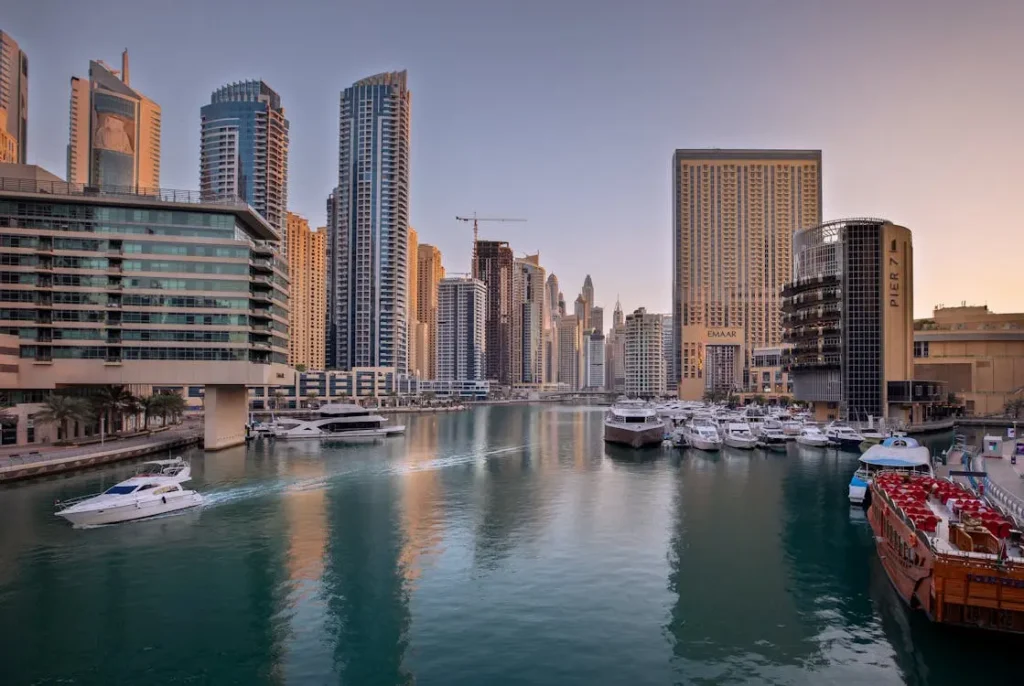
What Are The Health Risks Of Visiting Dubai In The Summer?
Dubai’s summer months are extremely hot, with temperatures often soaring above 40 degrees Celsius (104 degrees Fahrenheit).
Although the city has plenty of indoor attractions, the extreme heat poses a huge health risk.
Heat-Related Illnesses
- Heat Exhaustion:
- Symptoms: Heat exhaustion is a common heat-related condition that occurs when your body overheats. Symptoms include heavy sweating, weakness, dizziness, nausea, headache and fainting.
- Risks: Without proper treatment, heat exhaustion can lead to heatstroke, which is much more serious.
- Heatstroke:
- Symptoms: Heatstroke is a serious condition that occurs when your body temperature rises above 40°C (104°F). Symptoms include confusion, a rapid heartbeat, dry skin (due to lack of sweating) and fainting.
- Risks: Heatstroke is a medical emergency that can damage the brain and other vital organs, and can be fatal if not treated promptly.
Preventive measures
To reduce the risk of heat-related illnesses, follow these tips:
- Stay hydrated: Drink plenty of water throughout the day, even if you don’t feel thirsty. Avoid beverages containing caffeine and alcohol, as they can cause dehydration.
- Wear appropriate clothing: Choose lightweight, loose-fitting, and light-coloured clothing. Wearing a wide-brimmed hat and sunglasses can also help protect you from the sun.
- Limit outdoor activities: Plan outdoor activities during the early morning or late evening, when temperatures are cooler. Avoid strenuous activities during the peak heat of the day.
- Use sunscreen: Apply a high-SPF sunscreen to protect your skin from harmful UV rays. Reapply every two hours, or more often if you’ve been swimming or sweating.
- Seek air-conditioned environments: Spend time indoors in air-conditioned spaces, such as malls, museums, and restaurants, to avoid prolonged exposure to heat.
Frequently Asked Questions About Worst Time To Visit Dubai
The worst time to go to Dubai for vacation is during the summer months, specifically from June to August. During this time, temperatures can rise above 40°c (104 degrees Fahrenheit), making outdoor activities extremely uncomfortable.
To stay cool while visiting Dubai in summer, which is the worst time to visit Dubai due to the extreme heat, you can stay indoors during peak hours, visit air-conditioned malls wear light clothing, and stay hydrated.

